Module 7. Quality planning: tools and techniques
Quality planning: What is quality?
Quality represents a fundamental aspect for end users when buying and interacting with products or services because it is the foundation for branding through customer satisfaction. But quality in project management has a different meaning since it involves the delivery of project activities and outputs as effectively as possible. As a project manager, you are responsible for the overall quality of the work done by setting project quality goals, continuously auditing through project assurance (with regard to the process of checking the performance of the quality management plan) and products or services acceptance metrics through quality controls. Quality planning is fundamental for project success because quality itself is connected to the project triple constraints (time, cost, and scope) and recognise as the 4 element of the Iron Triangle as represented in Figure 10.
Figure 10. Iron Triangle, by Carmen Reaiche, Samantha Papavasiliou and Frank Anglani, licensed under CC BY (Attribution) 4.0
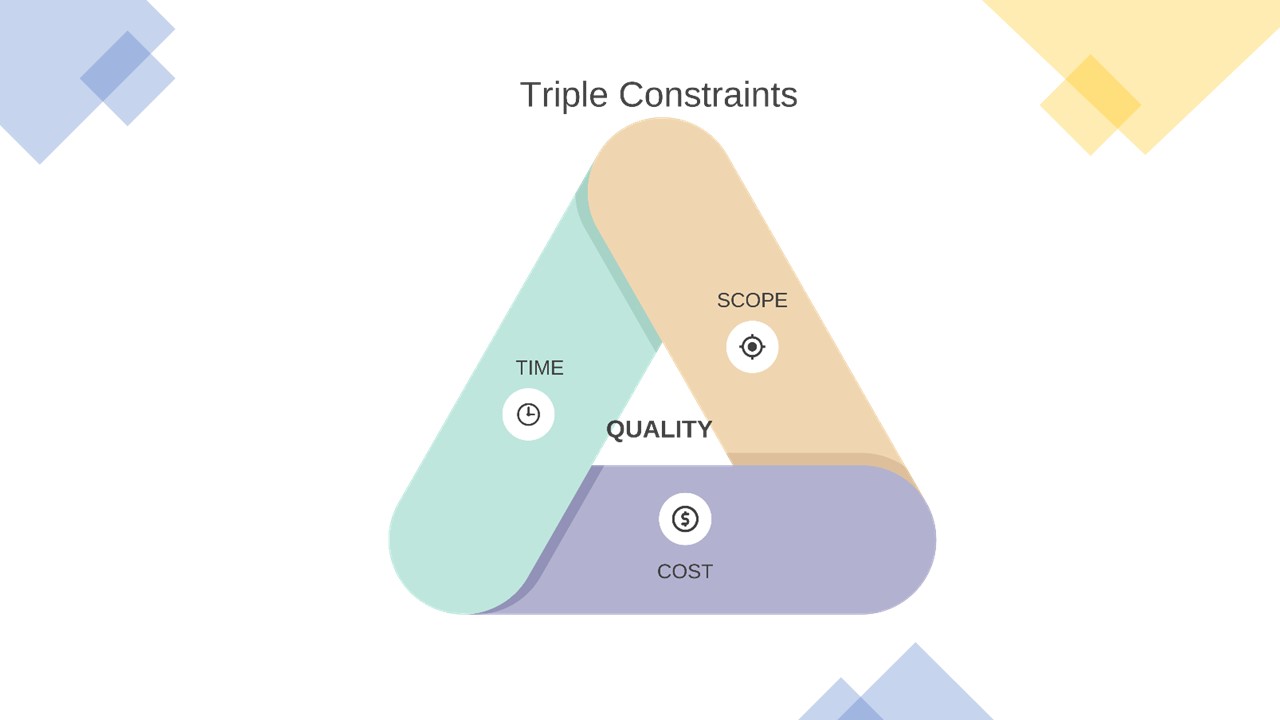
Quality may decrease when a project has a short window of time for output delivery or when the budget is consistently cut. Over-scoping a project with extra activities due to the stakeholder’s request for additional products or services features can also compromise the project management quality plan and the project’s overall success. In other words, projects cannot be considered successful if stakeholders’ quality metrics are not met, even if the project activities are delivered on time and within budget. It is imperative for project managers to make sure that the final project delivery suits stakeholders’ expectations so that deliverables and outcomes are beneficial for end users and the community. If you don’t know what quality standards your stakeholders consider acceptable, you won’t be able to ensure that your project will fulfil their expectations. That is why project managers must manage and control quality, just as they do costs, scope, and time.
Quality planning concerns gathering products or services requirements, usually collected in the initiation stage of the project life cycle (i.e., kick-off meeting or previous meetings with clients). These generally identify how project managers will assess the quality and avoid faults in the planning stage. Usually, organisations have a quality management system in place, consisting of internal policy that aligns with national and international standards (i.e., ISO 9000), that specifies how quality is assessed and measured across the organisation. Project managers must ensure through the quality planning that projects adhere to the corporate policy as well as to the territory legislation, standards, and guidelines where the service or product is made available. High quality is accomplished by preparing for issues rather than reacting to them as they arise. Requirements are established, and then methods are implemented to meet those standards and policies.
The foundation of quality planning is to set a standard for customer satisfaction through conformance to requirements and fitness of usage. The foremost is based on quantitative inspections of how much the product or service delivered deviates from the targeted minimum quality requirements established with stakeholders (i.e., colour, geometric tolerances, number of features embedded, etc.). The latter refers to how well deliverables do what they were planned to do (practicality or comfort to consume a service or use a product influenced by the design or hardware limitations).
Quality planning using the Agile approach
Unlike in Waterfall or project-controlled environments (Prince2), when teams work with an Agile mindset, individuals and interactions take over process and tools, working software are preferred to comprehensive documentation, collaboration takes over negotiations, and responding to change over following a plan. Therefore, quality planning and control are embedded in the product backlog items, sprint backlogs and sprint reviews as an incremental quality improvement process agreed amongst the scrum team, product owner and clients.
Let’s reflect now on the quality planning concepts discussed above with the following exercise.
Reflective exercise: playground renovation project
The council of Brisbane commissioned ABConstruction to undertake the renovation of two playgrounds in the Nundah and Banyo suburbs.
The project is seen as part of the northern suburbs’ requalification initiative, where open space can stimulate kids’ motor activities and socialisation, and where parents can enjoy moments of relaxation in a safe environment.
Due to the proximity to the local and international airports of Brisbane, Virgin and Qantas airlines have agreed to sponsor the renovation project, providing $1.2 million to requalify and commission the lots of land (2.5 ha each). In addition, they have agreed to purchase equipment, including swinging chairs, sliders, rope ladders, climbing net, and metal stairs, with shock-proof upholstering (1.5 cm) and 500 square meters rubber safety mat (3.5 cm thick) in line with both airlines’ themes. The project sponsors will also consider safety features, such as a fenced area equipped with safety cameras placed at the main entrance, the middle and every corner of the playground. ABConstruction will provide guidance on design aspects of the playground equipment in line with new and refurbished playgrounds to relevant Australian/New Zealand standards, including AS/NZ 4685 series and 4422.
Each playground must include a 500 m track equipped with kiosks and escalators with rolling bars to simulate the check-in process at the airport, where kids can race with airport trolleys.
Please consider:
What is/are the project’s deliverable(s)?
Can you identify any quality requirements?
What is/are project’s outcome(s)?
Inputs
As presented in the overview map of the quality management plan, planning quality requires the following documents, as shown in Figure 11.
Figure 11. Planning, adapted from the PMBOK Guide (2021), by Carmen Reaiche, Samantha Papavasiliou and Frank Anglani, licensed under CC BY (Attribution) 4.0
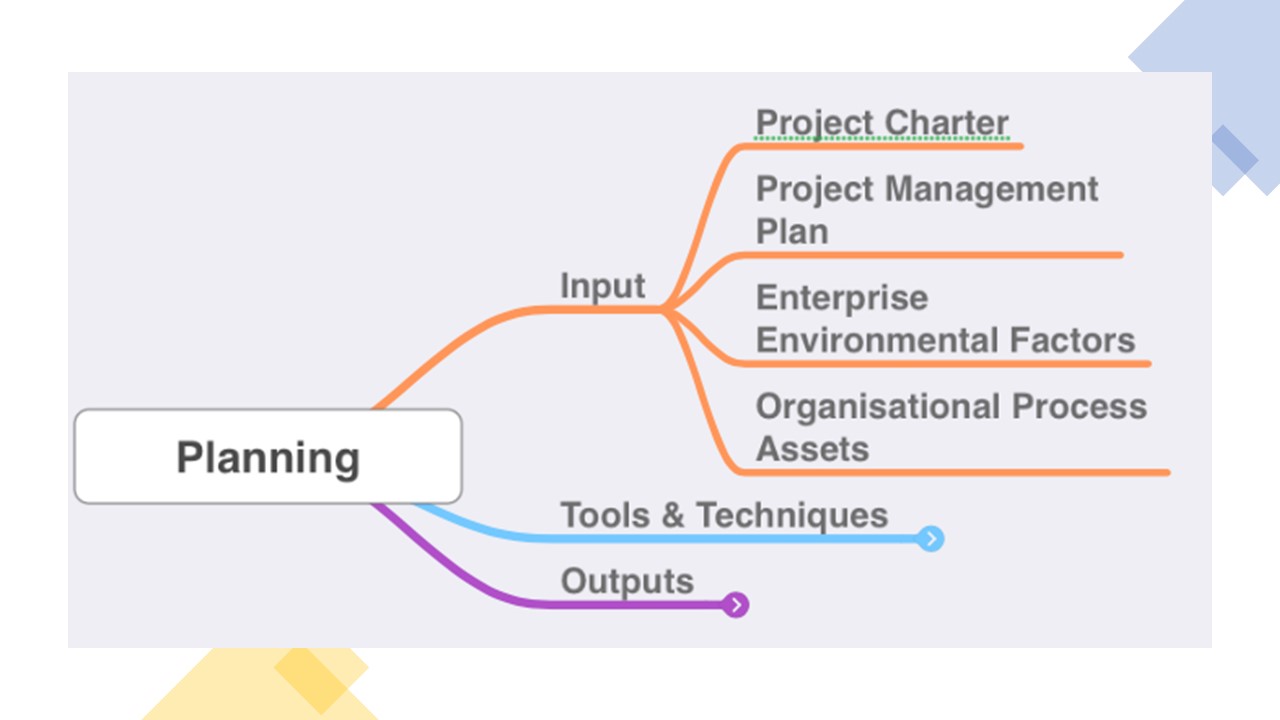
Project charter. This is a formal document that provides authority to the project manager to apply organisational resources to the project activities. It is based on the business case, agreements, and enterprise environmental factors and consists of project definition identifying vision, scope, outputs and outcome. It also includes the project governance which identifies roles and responsibilities, and direct and indirect stakeholders. The project plan is also part of the charter and includes resources, quality and financial aspects. The plan includes the schedule of major activities and tasks with dependencies to determine the critical path. Last but not least, the project charter includes project considerations which take into account risks, issues, assumptions and constraints. The charter contains supporting documents (i.e., business case, agreements, and standards).
Project management plan. This is the comprehensive documentation that represents the baseline of a project with regards to the requirements, quality, risks, and stakeholders’ management plans. It defines how project activities are performed, monitored and controlled, and closed.
Enterprise environmental factors. These are internal or external constraints to the organisation which can impact the project team and the delivery of activities. Examples of internal factors are organisational culture, infrastructure, geographic location and distribution of facilities, resource availability and so forth. External conditions include, for example, government and industry standards, targeted marketplace conditions, legal restrictions, political or religious aspects, and exchange rates.
Organisational process assets. These consist of the organisational knowledge, practices, policies, procedures, and historical information such as lessons learned, risk data and earned valued data.
Tools and techniques
So far, we have introduced the artefacts of the project planning (inputs) which are essential to generate the main output – the so-called quality management plan. Project managers can develop a quality management plan using tools, abilities, and techniques, as summarised in Figure 12.
Figure 12. Tools and techniques for quality planning, adapted from the PMBOK Guide (2021), by Carmen Reaiche, Samantha Papavasiliou and Frank Anglani, licensed under CC BY (Attribution) 4.0
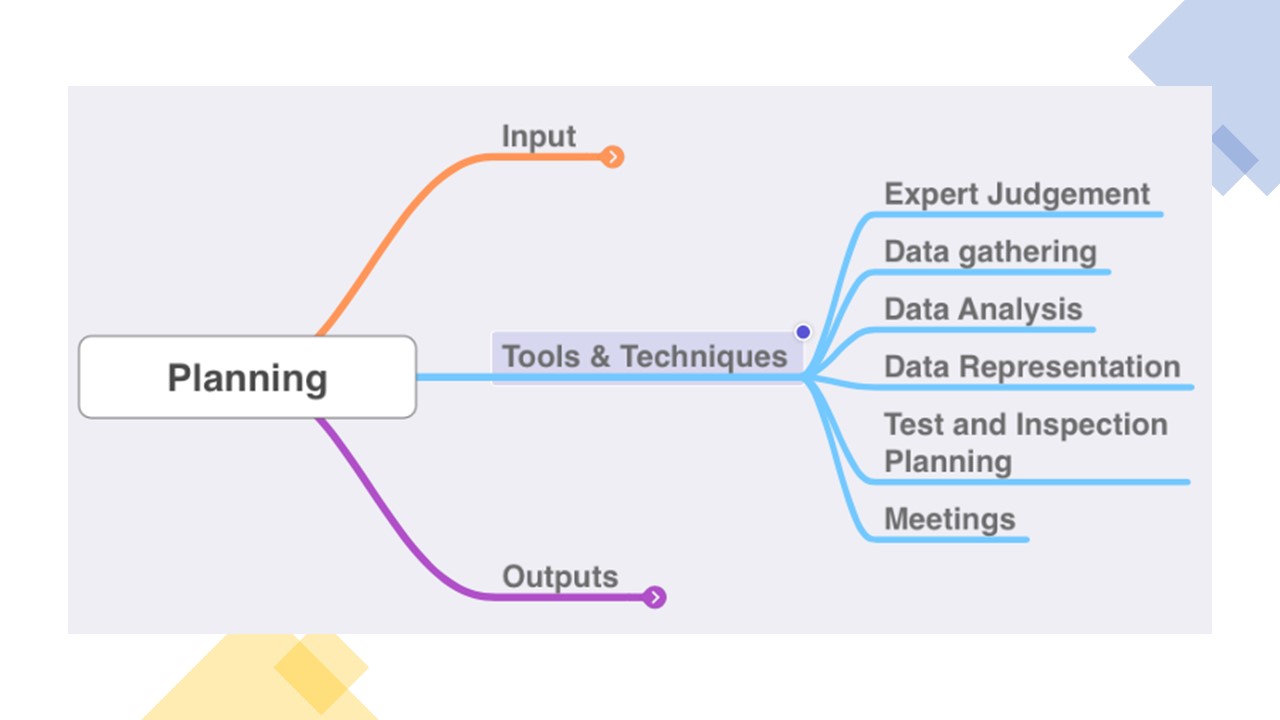
Expert judgement
The expert judgment is based on a project manager’s expertise in a specific application, and knowledge, including quality assurance, control, measurements, improvements, and systems.
Data gathering
Data gathering is useful during quality planning. Information can be collected using the following tools.
Benchmarking: allows comparison between projects that show similarities per industry sector or deliverables. It helps project managers to understand how the project is progressing against its baselines or other similar project baselines vicariously through lessons learned from previous projects.
Brainstorming: can be used to collect data from team members of a group or different groups who possess expertise in specific types of projects or activities.
Interviews: allows project professionals to acquire information about the stakeholders’ expectations and deliverable technical requirements. Usually, such interviews are performed in a neutral environment to set the scene for trusted and confidential exchanges, where stakeholders and project participants can feel encouraged to provide an unbiased contribution.
Data analysis
Once quality data are collected with one or more of the methods described above, data analysis is the next step and different techniques can be used for this purpose.
A cost-benefit analysis is a financial analysis tool which aims to estimate the pros and cons of alternatives, to assess which one provides more benefits. From a quality perspective, such a tool helps project managers to understand if activities are planned in a cost effective manner. Project managers in fact compare each quality activity against the cost of the quality and the expected benefit. For example, data collected during interviews in meetings or brainstorming are useful for project professionals to validate that stakeholders’ quality requirements are feasible within budget and the expected timeline. Moreover, internal meetings for team members have the scope to set from the beginning higher quality standards and productivity rates with less rework to keep costs down and to increase the overall stakeholders’ satisfaction.
The cost of quality of a project consists of the costs related to preventing poor-quality outputs (prevention costs), the cost related to measuring, auditing and testing deliverables (appraisal costs), and the cost for nonconformances (failure costs). An acceptable cost of quality is one that balances prevention and appraisal costs to avoid failures (see Figure 13).
Figure 13. Cost of Quality, adapted from the PMBOK Guide (2021), by Carmen Reaiche, Samantha Papavasiliou and Frank Anglani, licensed under CC BY (Attribution) 4.0
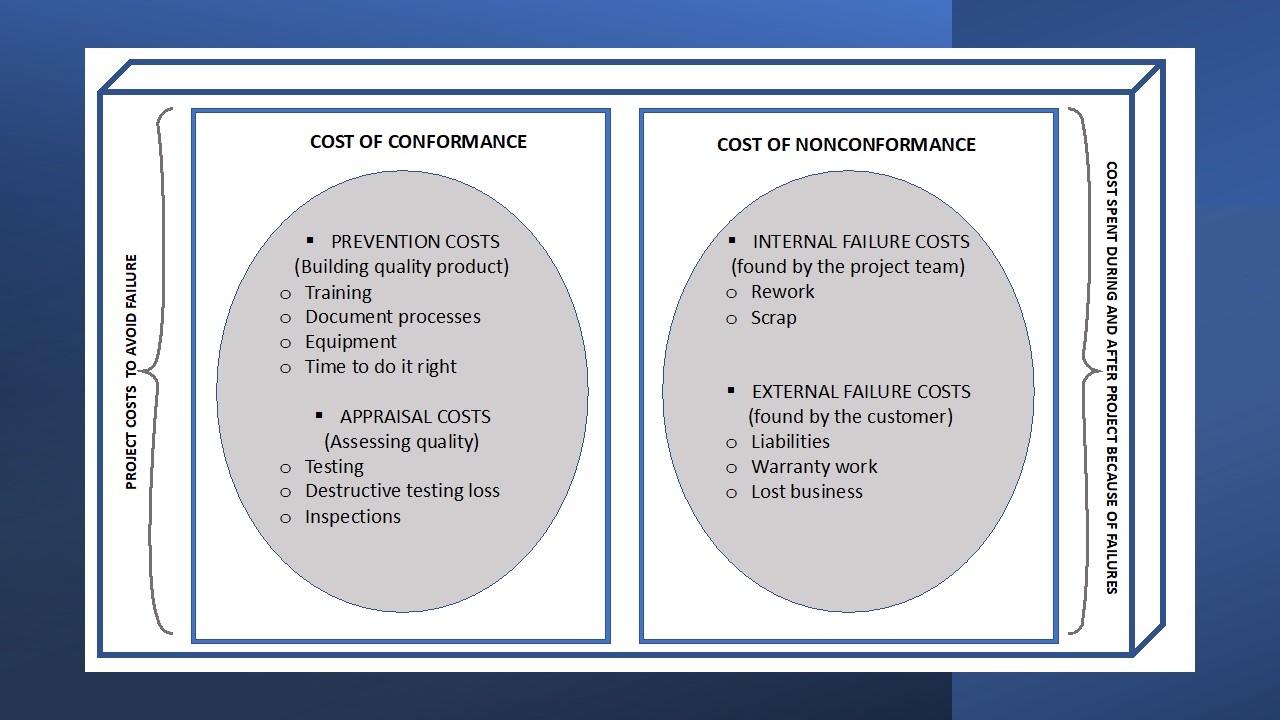
Decision-making techniques using multicriteria decision analysis tools such as the prioritisation matrix allow us to understand which activities to prioritise over others with regard to, for example, costs, quality, time, stakeholder importance and so forth.
Data representation
Once data is analysed, project managers can share the outputs of the analysis through different tools as follows.
Flowcharts aid the project manager to visualise and mind-map the project’s processes. displaying all the parallel branching or alternatives available for a process, aiming to transform inputs into outputs. This visual tool is very helpful when controlling the quality through auditing and inspections, where team members, leaders and project managers need to go through a specific set of actions that can lead to multiple scenarios and processes that help to obtain outcomes during each step of the inspection.
The matrix diagram or chart is a tool for planning and managing projects. It helps you to look at the connections between different data points and figure out what they mean. You can use these diagrams to draw comparisons among two or more groups of items within the same group. Matrix charts help project managers to figure out how relevant information is related to each other and how strong those connections are.
A matrix contains the following type of information: data, functions, concepts, people materials, equipment and actions. The connection between items is shown by numbers or symbols within the cell where each element pair intersects.
The matrix’s shape is determined by the number of elements being compared. There are 5 common matrix diagrams: L-shaped, Y-shaped, C-shaped, T-shaped, and X-shaped. Figures 14 and 15 provide representative examples of these matrixes.
Figure 14. Y-shaped matrix developed using Lucidchart.com, by Carmen Reaiche, Samantha Papavasiliou and Frank Anglani, licensed under CC BY (Attribution) 4.0
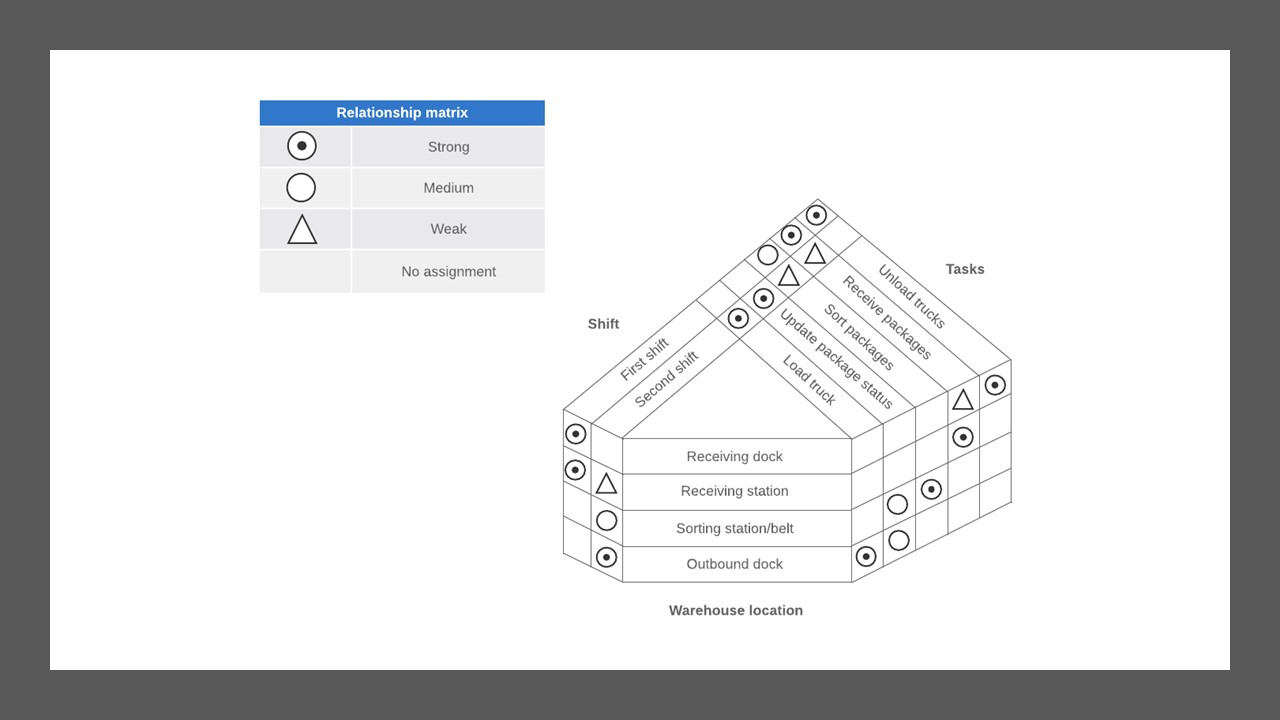 Figure 15. T-shaped matrix developed using Lucidchart.com, by Carmen Reaiche, Samantha Papavasiliou and Frank Anglani, licensed under CC BY (Attribution) 4.0
Figure 15. T-shaped matrix developed using Lucidchart.com, by Carmen Reaiche, Samantha Papavasiliou and Frank Anglani, licensed under CC BY (Attribution) 4.0
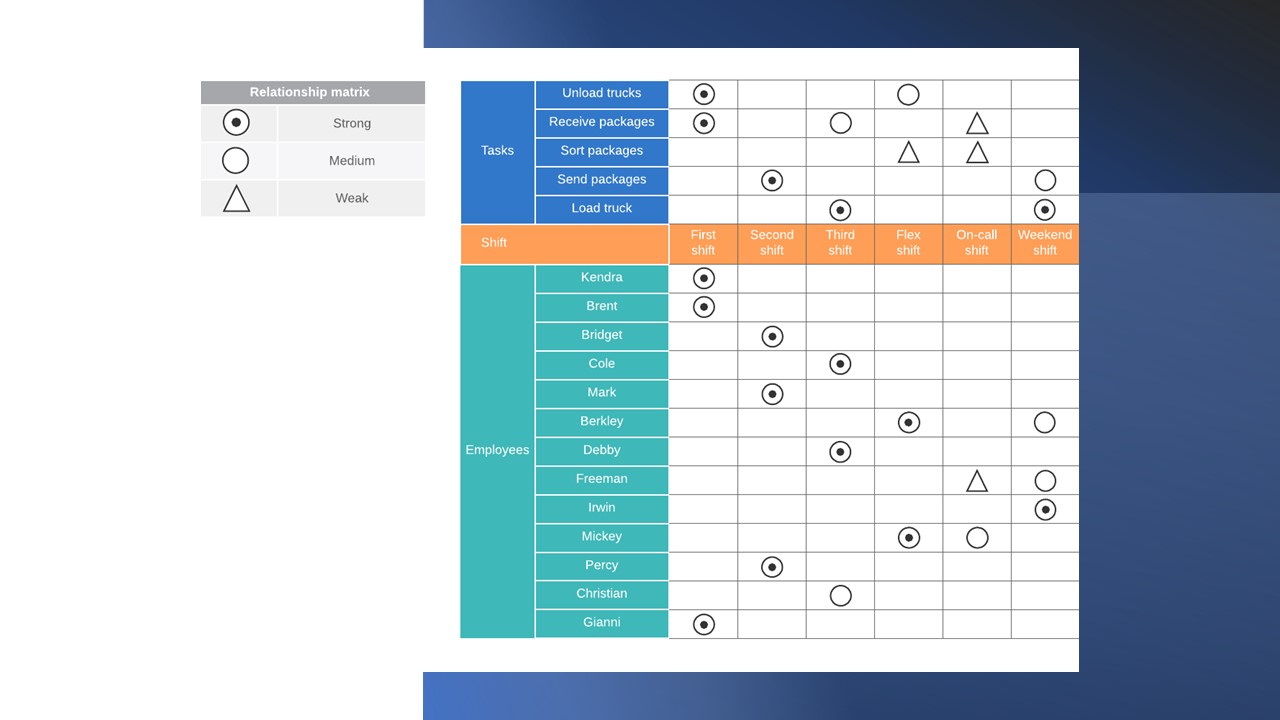
Mind mapping is a visual method which helps project managers organise key concepts around a major topic. For example, quality could be the main topic of interest in quality planning, connected to several other branches which represent the quality requirements, constraints, dependencies, and relationships.
Test and inspection planning
During this stage, project managers and the rest of the team plan how to test and inspect project deliverables against stakeholders’ requirements and expectations. Such tests are industry-driven and may in fact incorporate single or two-stage (alpha and beta) testing and inspections to provide robustness to the quality process and also to incorporate any incremental enhancements after consultation with clients and other stakeholders.
Meetings
When stakeholders meet with the project team and the project manager during official project meetings, it can serve as an effective and efficient way to have a constructive and incremental approach to quality robustness, where quality metrics are discussed and evaluated per activity, product or service that must be delivered.
Outputs
The objectives of the quality planning stage are reported in Figure 16.
Figure 16. Quality planning outputs, adapted from the PMBOK Guide (2021), by Carmen Reaiche, Samantha Papavasiliou and Frank Anglani, licensed under CC BY (Attribution) 4.0
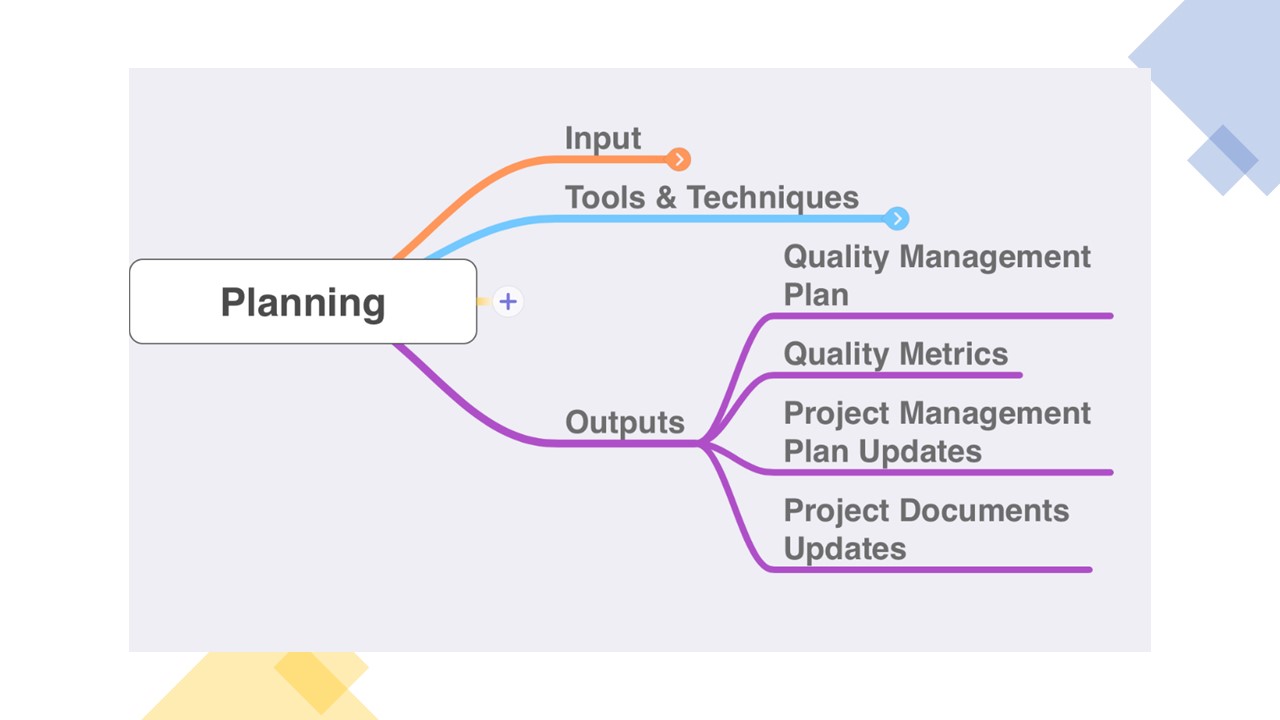
Quality management plan
As previously mentioned, the quality management plan is a key part of the project plan, as it describes how standards, guidelines, policies, and organisational procedures and systems are implemented to satisfy the project quality objectives. This plan needs to be reviewed in the planning stage to provide a solid base for project managers to rely upon during the decision-making process. The benefit of reviewing is to ensure that project managers have an up-to-date project value proposition from the beginning which can lead to a cost reduction because of less rework. The way the quality project management plan is structured depends on the type of project and its requirements, but generally it includes relevant quality standards, quality objectives, quality roles and responsibilities, quality control of activities, quality tools implemented in the project and any major procedures which are of key importance for the project to deal with non-conformances.
Quality metrics
Quality metrics are the deliverable attributes requested by clients and any other key stakeholders involved in the project. Examples of quality metrics include defect rates, failure rates, lead time, deployment frequencies, mean time between failures, number of likes, number of visualisations and so forth.
Overall, quality planning entails establishing which quality criteria are applicable to the project and how to meet them. The project quality management plan details the information essential to properly manage project quality from planning through to delivery. It specifies the project’s quality rules, methods, criteria and application areas, as well as roles, duties, and authority.
Now let’s revise our knowledge:
Key Takeaways
- The project quality management plan is created during the planning phase of the project.
- A strong quality management plan begins with a precise explanation of the project’s objectives.
- The quality management strategy should detail how the team will apply its quality policy.
- Quality may decrease when a project has a short window of time to deliver outputs or when the budget is consistently cut.
References
Project Management Institute (2021). A guide to the project management body of knowledge (PMBOK guide), 7th edn, Project Management Institute.

